I came up with a few more possible layers:
13. The ethical layer. I at first thought ethics would be in the ideational layer, but am now not sure.
14. The anthroceptual, or the human relations layer: character, as opposed to plot. At this point it occurs to me that maybe I ought to link each layer to an awareness or sub-awareness in the cerebrum as I have here. I could also rename the ideational layer the “scienceptual layer.” Will think it over.
15. The allegorical layer, or the only layer those questioning the authorship of Shakepeare’s sonnets are really interested in, the one—if it exists—that arbitrarily attaches real people and places to objects in a poem. Perhaps I should make two layers out of this, the sane allegorical layer, for poems like Spenser’s Faery Queene that use straight-forward allegory, and the psitchotic allegorical layer for poems a lunatic has found to be allegorical.
Actually, this layer should be called the allegorical paraphrasable layer, because it is everything a poem is thought to be under its surface.
Because I have it readily at hand, here’s a rough full paraphrase of Shakespeare’s Sonnet 18 I did to show Paul Crowley how sane interpretations of poems are made. Needless to say, I found no allegorically paraphrasable layer.
> 1. Shall I compare thee to a Summers day?
“Would it be a good idea to make a comparison of you to a day in the most pleasant of the four seasons?”
Note that my explication is a paraphrase of the line that takes the DENOTATION of every word into consideration and tries to make linguistic sense. It is concerned primarily with what the surface of the poem means. It ought to deal, too, with any clear-cut connotations of the text it concerns, as well as any secondary meanings, if any. In this case, I find no connotations worth mention, and there is nothing in the line (or, to my knowledge, outside the line–that is, in the background layer, which should be consulted by one making a paraphrase of a poem) to indicate it means anything more than it says.
> 2. Thou art more louely and more temperate:
“You are superior to the summer’s day mentioned in both beauty and temperament.” Ergo, In other words, there’s really no comparison between you and a summer’s day: you’re much the better of the two.
Again, there is nothing in the text to indicate it means anything more than it directly says.
> 3. Rough windes do shake the darling buds of May,
“Unruly, harmful movements of air upset the delicate early blossoms of summer flowers.” Note: May may have been thought a part of summer in Shakespeare’s time. Or May’s buds may still be present by the true beginning of summer.
> 4. And Sommers lease hath all too short a date:
“And that season does not remain in charge of nature for very long: its “contract” to do so is short-term.”
This line and the previous one point out in some detail the defects of a summer’s day, but, implicitly, not of the addressee. There is nothing in them to suggest they mean anything else.
> 5. Sometime too hot the eye of heauen shines,
“There are times when the sun is unpleasantly too high in temperature,”
> 6. And often is his gold complexion dimm’d,
There are also frequent times when the sun is overcast.”
Again, two lines providing further details of what makes the summer’s day inferior to the addressess, who–we are led to believe–has no equivalent of temperatures that are either too hot or not warm enough. And who is never “grey” in disposition.
> 7. And euery faire from faire some-time declines,
“Every good thing is subject to decay, and therefore must lose some of its best qualities. “In summation, each good thing in a summer’s day must eventually retreat from its peak, or lose its best qualities,”
> 8. By chance, or natures changing course vntrim’d:
“the victim of some random event (like being trodden on by some animal) or of the normal way the natural world behaves (turning stormy, for instance).
Ergo, we have two more lines finishing up telling the reader what is wrong with summer–and, it is strongly implied, NOT with the addressee. So far, not a hint that anything other than the surface meaning of the words (beautifully) used is intended.
> 9. But thy eternall Sommer shall not fade,
“Your never-dying prime season, however, won’t ever decline”
> 10. Nor lose possession of that faire thou ow’st,
“or surrender the beauty of appearance and disposition, and other excellences you are in possession of”
Two more straight-forward lines, these ones claiming the addressee will not fade in any manner the way a summer’s day inevitably will.
> 11. Nor shall death brag thou wandr’st in his shade,
“Nor will the ruler of the realm those who die be able to boast that you have entered his realm”
> 12. When in eternall lines to time thou grow’st,
“when in ever-living lines of verse you continue to flourish and perhaps even improve,”
Again, a straight-forward set of lines, these bringing in the speaker of the poem’s second main thought, which is that poetry can make one who is its subject immortal. I admit to not yet knowing exactly what “to time” means, but I believe I have given the most plausible meaning to every one of the other words in the poem.
> 13. So long as men can breathe or eyes can see,
“Until such time as human beings are unable to keep alive by taking in air or there are organs sensitive to light,”
> 14. So long liues this, and this giues life to thee,
“the poem you have been reading or listening to will endure, and it will grant you immortality.”
That does it. My explication accounts for every word in the poem except “to” and “time,” and even those can be accounted for as having something to do with resisting what time does to all things. It is also completely plausible AND sufficient, for those with any ability at all to appreciate poetry. (Of course, there’s much more to any poem than an explication of its sanely paraphrasable layer.) To show it has an allegorically paraphrasable layer (or or any other layer containing further meanings of the kind just revealed) requires external evidence of it like the notes of the poet saying such meanings are there, or poems by other poets that seem on the surface like this one but have some significant hidden under-meaning, or permit a second explication that comes up with such a hidden under-meaning that is as smooth, coherent, and reasonably interesting as the primary meaning I’ve just shown the poem indubitably to have.
The third course is the only one you have available, Paul–because we have no notes or anything else relevant from the author or from anyone else to indicate any hidden meanings, nor are there any poems in the language (or any language, so far as I know) that are like the kind of poem you claim this is. I am absolutely sure that you cannot provide an explication that reveals a smooth, coherent, reasonable hidden meaning. In fact, I’m pretty sure you will claim it’s not necessary to–the poet was too complex for any academic or even you fully to explicate.
That would be nonsense, and clear evidence that your interpretation is defective. But not to you. Nor will you ever accept my claim that it is an argument against your interpretation
.






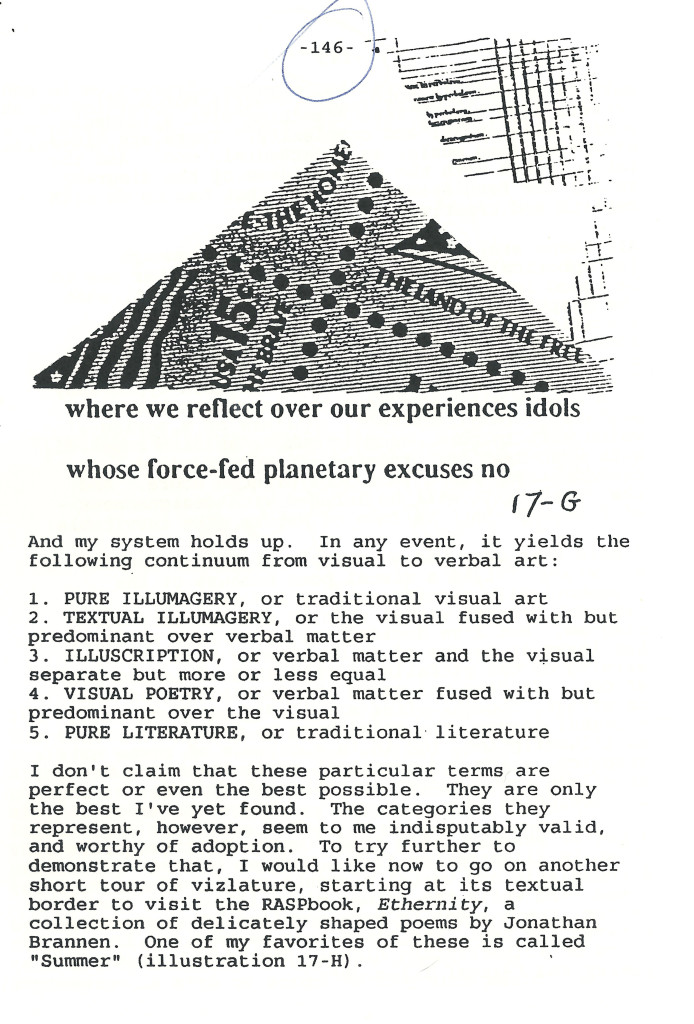
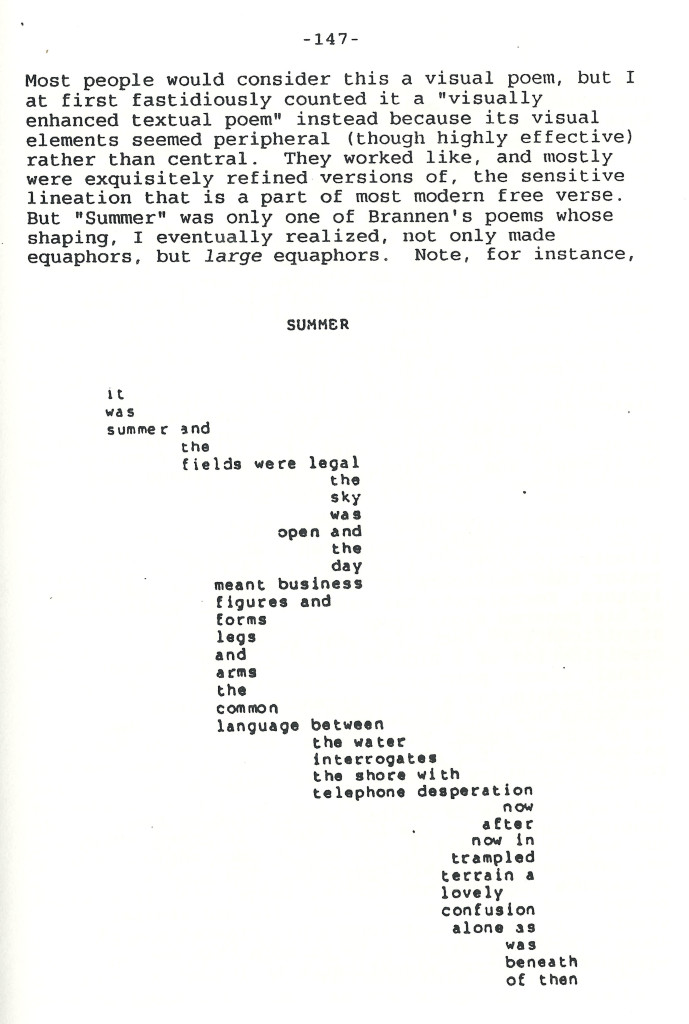
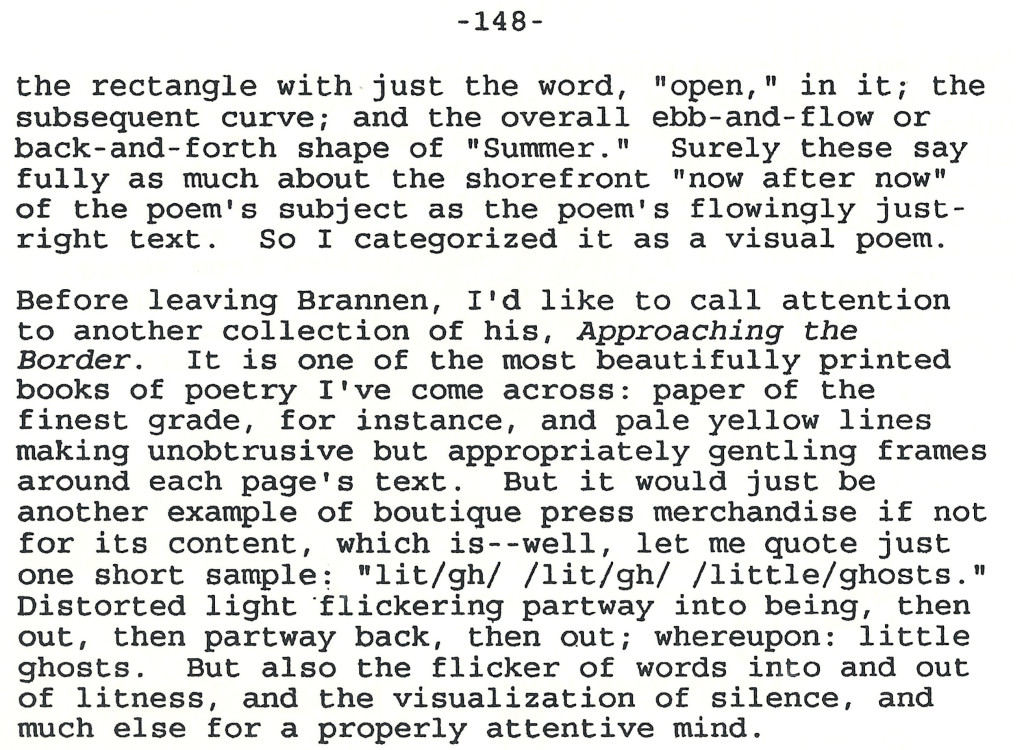
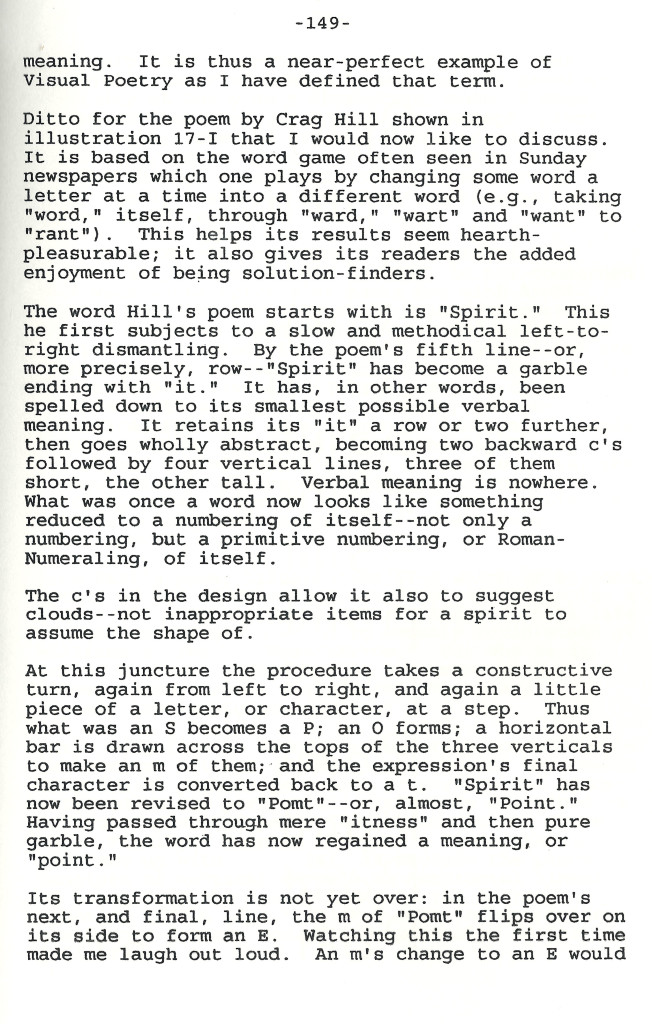


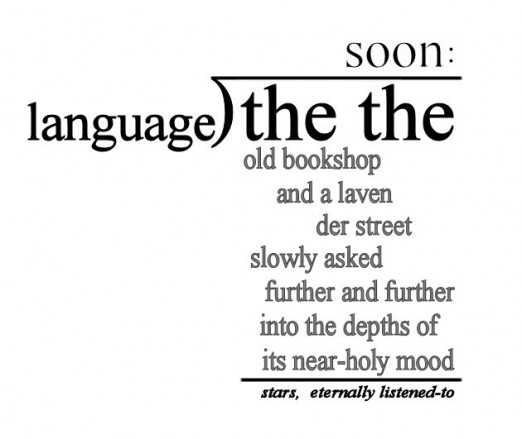
I really like this one; it strikes me as very E.E. Cummings-inspired, and I love that guy. I think the use of gray is a good idea because it gives the “remainder” more punch at the end. I’m a bit confused on reading your description in which you keep talking about Basho’s pond, which I don’t see in evidence here … I’m thinking if I had seen an earlier version of this, or I was better versed in the Grummanverse, I would understand that. And finally, you won’t have to struggle between “the” or “a” bookshop’s mood soon, where there’s just one bookshop left. Just had to end that with a little (sad) humor!
Oh, boy, I get to explain! Nothing I love more. Basho comes in because of his famousest poem, which I’ve made versions of and written about a lot, the one that has the “old pond” a frog splashes into. My poem has an “old bookshop” that has a mood with depths a street enters like (I think) the pond’s water with depths the frog enters. But now that you bring it up, I guess the allusion is pretty hermetic.
Glad you like it. I still do now that I’m looking at it again–although it strikes me as pretty weird.